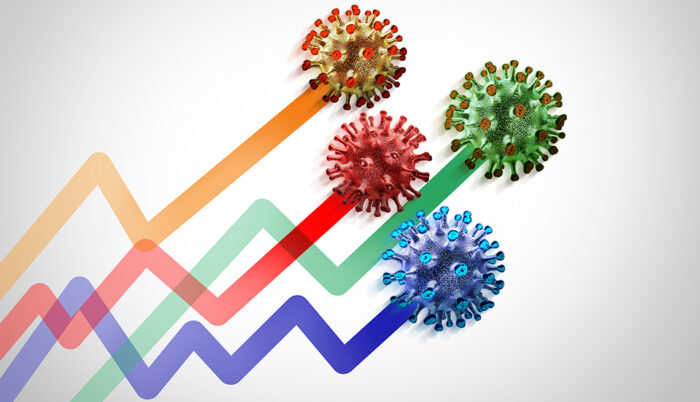COVID-19 Cases Are on the Rise: Reminders for Keeping Your Employees Safe and Complying with California’s Guidelines
August 8, 2024 8:38 am With COVID-19 cases back on the rise in the San Joaquin Valley, we wanted to remind you of California’s current guidelines on COVID-19 in the workplace. The California Department of Industrial Relations Division of Occupational Safety & Health Publication Unit released these guidelines on January 9, 2024.
With COVID-19 cases back on the rise in the San Joaquin Valley, we wanted to remind you of California’s current guidelines on COVID-19 in the workplace. The California Department of Industrial Relations Division of Occupational Safety & Health Publication Unit released these guidelines on January 9, 2024.
Infectious Period
The infectious period for symptomatic COVID-19 cases begins when symptoms appear. Individuals with symptoms can return to work if they have been fever-free for 24 hours and their symptoms are either mild or improving.
For asymptomatic COVID-19 cases, there is no designated infectious period for exclusion or isolation. If symptoms do emerge, the same criteria as for symptomatic cases apply. This represents a notable change from the earlier definition, which considered the infectious period to span from two days before symptom onset to ten days after symptoms first appeared, given that the person has been fever-free for 24 hours and symptoms have improved.
Isolation
Asymptomatic COVID-19 cases are no longer required to isolate for five days. Instead, they should wear a mask for 10 days and avoid close contact with individuals at high risk for severe COVID-19 for the same period. Symptomatic COVID-19 cases should be excluded for 24 hours and can return once they have been fever-free for 24 hours and their symptoms are mild or improving.
Testing
The CDPH now advises against testing all close contacts of those infected with COVID-19. Instead, testing is recommended only if a close contact (1) exhibits new COVID-19 symptoms, (2) is at higher risk of severe illness, or (3) has contact with individuals at higher risk of severe illness. However, employers must still provide free COVID-19 testing during paid time for employees who have experienced close contact, except for those who are asymptomatic and have recently recovered from COVID-19.
Although testing requirements have become less stringent since 2020, employers are still mandated to test all close contacts during an outbreak and everyone in the exposed group during a major outbreak (three or more employee COVID-19 cases in an “exposed group” within a 14-day period). In such situations, employees showing symptoms who refuse to be tested must be excluded from work for at least 24 hours from the onset of their symptoms. They can only return to work once their symptoms are mild or improving and they have been fever-free for at least 24 hours without using fever-reducing medications.
Prevention Policies
Employers are still required to address COVID-19 as a workplace hazard. They should ensure their COVID-19 prevention programs are updated and do not contain outdated information regarding isolation and exclusion requirements.
Provide Notice
Although some notice requirements expired on January 1, employers are still obligated to inform employees and independent contractors who had close contact with a COVID-19 case within one business day. This notice should include information on COVID-19-related benefits available under federal, state, or local laws. For instance, employees who test positive, are unable to work due to COVID-19 and believe they contracted it at work should be given information on how to file workers’ compensation or disability insurance claims.
Face Coverings
Employers must continue to provide face coverings and ensure their use as required by CDPH. For example, symptomatic COVID-19 cases returning to work must wear a face covering until 10 days have passed since symptoms began. Asymptomatic COVID-19 cases must wear face coverings for 10 days from the date of their first positive test.
Have Questions? Give us a call at 559-431-8090 or e-mail us at consultants@sierrahr.com
We’re here to help!
